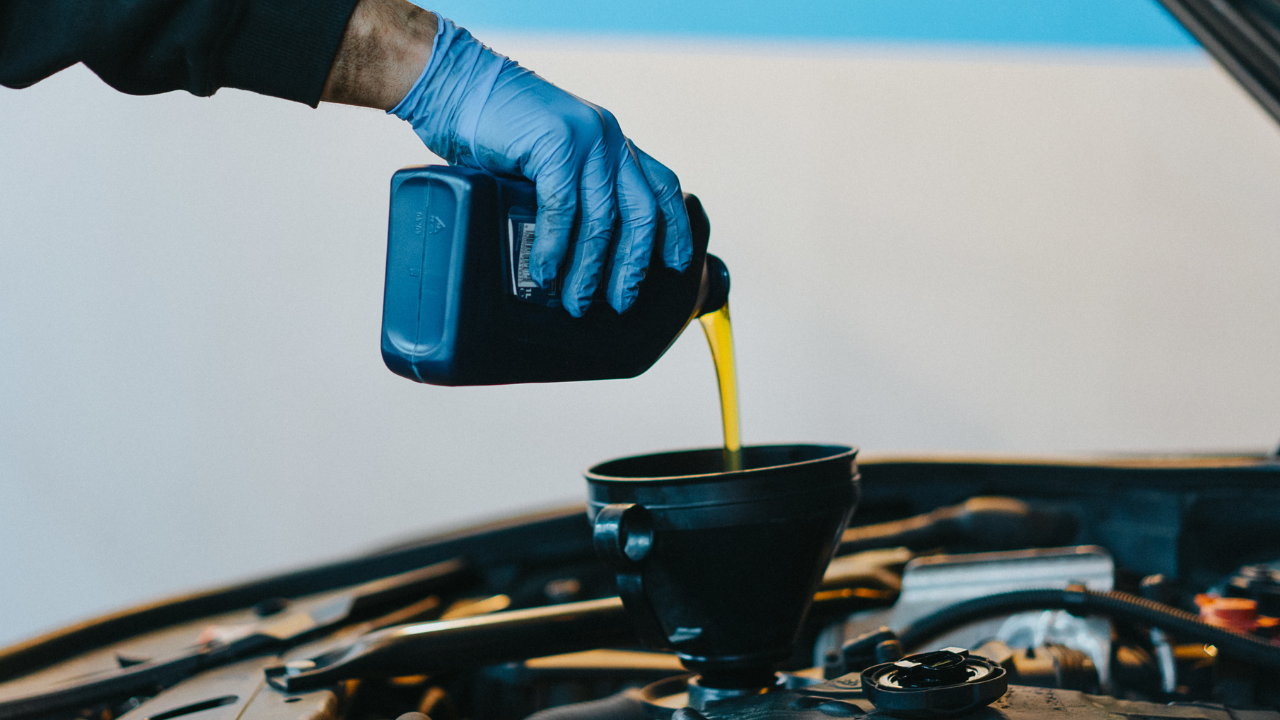When it comes to car maintenance, many drivers focus on things like changing the engine oil, topping up coolant, or checking tire pressure. However, one crucial component often overlooked is the car's gear oil, which plays an essential role in the longevity and performance of your vehicle. Gear oil, or transmission fluid, is responsible for lubricating your vehicle’s transmission, ensuring that the gears shift smoothly, and reducing the amount of friction in the system.
In this blog, we’ll explore the importance of changing your car's gear oil, how it affects your vehicle’s performance, and why regular maintenance is key to keeping your transmission in top shape.
What is Gear Oil and Why is it Important?
Gear oil is a type of lubricant used to reduce friction and prevent overheating in the transmission system. It helps ensure that your vehicle's gears shift smoothly without causing damage. The oil also absorbs heat generated from the moving parts and helps prevent corrosion.
There are two main types of gear oil used in vehicles:
- Manual Transmission Oil – This type is used in cars with manual transmissions and requires regular changes to maintain smooth gear shifting.
- Automatic Transmission Fluid (ATF) – Used in vehicles with automatic transmissions, this fluid needs to be checked and replaced at recommended intervals to keep the transmission functioning properly.
Over time, gear oil can become contaminated with metal particles and other debris from the transmission system. As this happens, the oil’s ability to lubricate and cool the system diminishes, leading to increased friction, overheating, and, ultimately, costly transmission repairs.
Signs That Your Gear Oil Needs to Be Changed
If you're unsure whether your gear oil needs replacing, there are a few signs to look out for:
- Difficulty Shifting Gears: If you notice that it’s harder to shift gears or if they grind when you change them, the gear oil may be low or contaminated.
- Unusual Noises: Grinding or whining noises coming from the transmission are a sign that the oil is no longer providing adequate lubrication.
- Slipping Gears: If your car is experiencing delays or unintentional shifts, the gear oil could be insufficient or degraded.
- Overheating: The transmission might overheat if the oil can no longer absorb and dissipate heat effectively.
- Discolored Oil: Healthy gear oil should be a translucent, reddish-brown color. If the oil appears dark or dirty, it may need to be changed.
Why You Should Change Your Gear Oil Regularly
-
Improves Performance
Regularly changing your gear oil ensures smooth shifting and optimal transmission performance. Fresh gear oil can help your car’s transmission operate more efficiently, leading to better acceleration and power transfer from the engine to the wheels. -
Prevents Overheating and Wear
Old or degraded gear oil can no longer adequately absorb heat or reduce friction between the moving parts of the transmission. This can lead to overheating, which may cause the components to wear out or even seize up completely. Regular oil changes can prevent these costly issues and extend the lifespan of your transmission. -
Increases Fuel Efficiency
When your transmission runs smoothly, it helps your car maintain an optimal balance between engine power and fuel consumption. Gear oil that is functioning well helps the engine run more efficiently, reducing strain and improving fuel economy. -
Reduces Repair Costs
Transmission repairs are often costly, and replacing a worn or damaged transmission can be one of the most expensive repairs for a car. Changing your gear oil regularly is a relatively inexpensive maintenance task that can save you from needing major transmission repairs down the road. -
Protects Against Corrosion
Gear oil has rust and corrosion inhibitors that protect the transmission components from wear. When the oil becomes contaminated, these protections break down, which increases the likelihood of corrosion and rust inside the transmission, shortening its lifespan.
How Often Should You Change Your Gear Oil?
The frequency with which you should change your gear oil depends on several factors, including the type of vehicle, driving conditions, and manufacturer recommendations. Generally, it's advisable to change the gear oil every 30,000 to 60,000 miles (48,000 to 96,000 km), but always refer to your vehicle’s owner’s manual for specific guidance.
If you drive in harsh conditions such as heavy traffic, extreme temperatures, or off-road, you may need to change your gear oil more frequently.
How to Change Gear Oil: A Step-by-Step Guide
If you're a DIY enthusiast, changing your car's gear oil can be a straightforward process with the right tools and a little bit of patience. Here's a general step-by-step guide for changing gear oil:
- Prepare Your Tools: You’ll need a drain pan, a funnel, new gear oil (consult your manual for the right type and quantity), a wrench, and gloves.
- Locate the Drain Plug: Find the drain plug under your vehicle and use a wrench to remove it, allowing the old oil to drain into the pan.
- Remove the Fill Plug: After draining the old oil, remove the fill plug to allow air to enter the system.
- Replace the Oil: Using a funnel, pour the new gear oil into the fill hole until the oil reaches the required level.
- Reassemble and Test: Tighten both the drain and fill plugs, lower the car, and take it for a test drive to ensure everything is functioning smoothly.
If you're unsure or uncomfortable with changing the oil yourself, it’s always a good idea to take your car to a trusted mechanic.
Conclusion
Changing your car's gear oil is a critical maintenance task that should not be overlooked. Regular oil changes can improve your car's performance, prevent costly repairs, and keep your transmission running smoothly for years. By staying on top of this maintenance task, you can avoid major issues and enjoy a safer, more reliable driving experience.
Need gear oil or other auto parts? Visit our online store to shop for top-quality products to keep your car running at its best!









